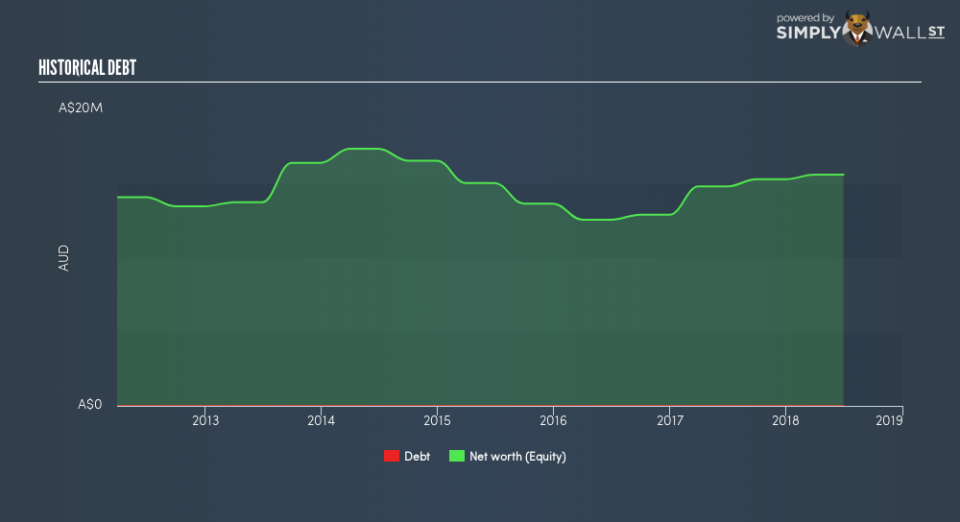What Investors Should Know About Jameson Resources Limited’s (ASX:JAL) Financial Strength

The direct benefit for Jameson Resources Limited (ASX:JAL), which sports a zero-debt capital structure, to include debt in its capital structure is the reduced cost of capital. However, the trade-off is JAL will have to adhere to stricter debt covenants and have less financial flexibility. Zero-debt can alleviate some risk associated with the company meeting debt obligations, but this doesn’t automatically mean JAL has outstanding financial strength. I will go over a basic overview of the stock’s financial health, which I believe provides a ballpark estimate of their financial health status.
See our latest analysis for Jameson Resources
Want to help shape the future of investing tools and platforms? Take the survey and be part of one of the most advanced studies of stock market investors to date.
Is JAL right in choosing financial flexibility over lower cost of capital?
Debt capital generally has lower cost of capital compared to equity funding. Though, the trade-offs are that lenders require stricter capital management requirements, in addition to having a higher claim on company assets relative to shareholders. The lack of debt on JAL’s balance sheet may be because it does not have access to cheap capital, or it may believe this trade-off is not worth it. Choosing financial flexibility over capital returns make sense if JAL is a high-growth company. JAL’s revenue growth over the past year was an impressively high triple-digit rate, therefore the company’s decision to choose financial flexibility is justified as it may need headroom to borrow in the future to sustain high growth.
Does JAL’s liquid assets cover its short-term commitments?
Since Jameson Resources doesn’t have any debt on its balance sheet, it doesn’t have any solvency issues, which is a term used to describe the company’s ability to meet its long-term obligations. However, another measure of financial health is its short-term obligations, which is known as liquidity. These include payments to suppliers, employees and other stakeholders. With current liabilities at AU$246k, it appears that the company has been able to meet these commitments with a current assets level of AU$2.1m, leading to a 8.68x current account ratio. Having said that, many consider a ratio above 3x to be high, although this is not necessarily a bad thing.
Next Steps:
As a high-growth company, it may be beneficial for JAL to have some financial flexibility, hence zero-debt. Since there is also no concerns around JAL’s liquidity needs, this may be its optimal capital structure for the time being. In the future, its financial position may be different. This is only a rough assessment of financial health, and I’m sure JAL has company-specific issues impacting its capital structure decisions. I suggest you continue to research Jameson Resources to get a more holistic view of the stock by looking at:
Historical Performance: What has JAL’s returns been like over the past? Go into more detail in the past track record analysis and take a look at the free visual representations of our analysis for more clarity.
Other High-Performing Stocks: Are there other stocks that provide better prospects with proven track records? Explore our free list of these great stocks here.
To help readers see past the short term volatility of the financial market, we aim to bring you a long-term focused research analysis purely driven by fundamental data. Note that our analysis does not factor in the latest price-sensitive company announcements.
The author is an independent contributor and at the time of publication had no position in the stocks mentioned. For errors that warrant correction please contact the editor at editorial-team@simplywallst.com.

